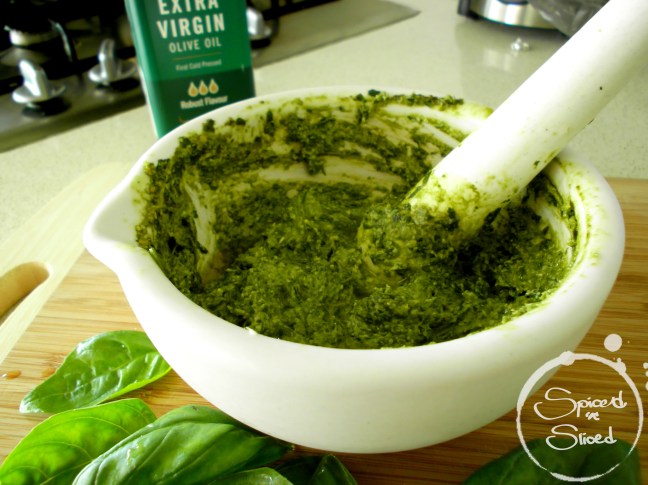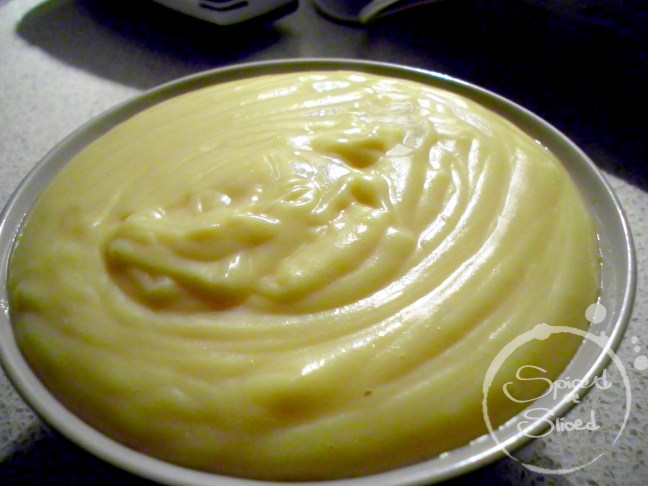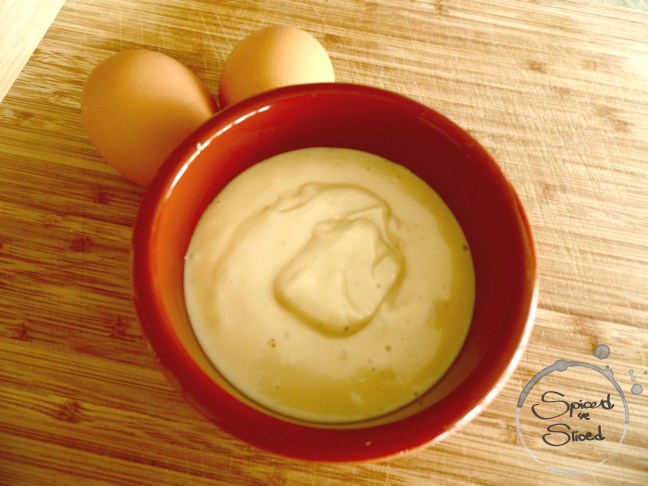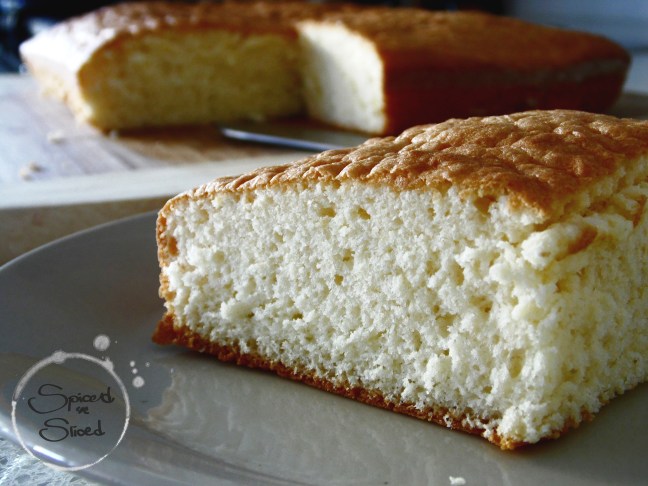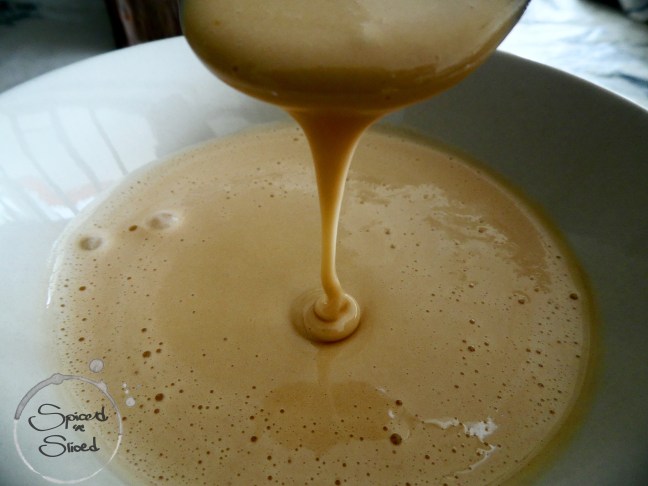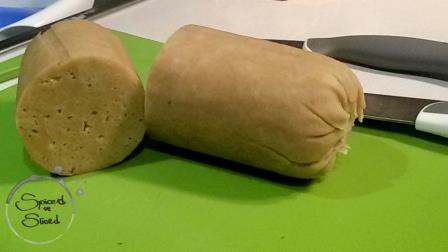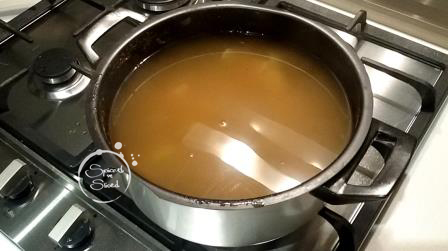The pesto is a sauce from Liguria, traditionally used to season the typical pasta shapes, like trofie, trofiette, lasagna or prepare complete dishes such as trenette avvantaggiate or Ligurian minestrone. The preparation of the pesto is not complex, the important thing is to get the right ingredients … obviously we recommend those in Liguria, but in Australia I could not find them! So, you can replace the traditional basil and extra virgin olive oil with their variants, which are not too strong and stinging, but sweet and delicate. Doses of cheese and garlic may of course vary depending on your tastes, those recommended in this recipe will make the taste of your pesto very balanced!
Il pesto genovese è una salsa di origine ligure, utilizzata tradizionalmente per condire dei formati di pasta tipici, come le trofie, le trofiette, le lasagne o preparare piatti completi come le trenette avvantaggiate o il minestrone ligure. La preparazione del pesto non è complessa, l’importante è procurarsi i giusti ingredienti… ovviamente si consigliano quelli dell’area ligure, ma in Australia non sono riuscita a trovarli! Quindi, potete sostiture il basilico e l’olio extravergine tradizionali con delle loro varianti, che non siano troppo forti e pizzicanti, ma dolci e delicate. Le dosi dei formaggi e dell’aglio possono ovviamente variare in base ai gusti, quelle consigliate in questa ricetta renderanno comunque un sapore molto equilibrato!
INGREDIENTS:
30g of basil leaves, young and tender
150ml of extra virgin olive oil
40g of grated Parmesan cheese
15g of grated pecorino
1 handful of pine nuts
1 clove pink garlic
1 pinch of salt
INGREDIENTI:
30g di foglie di basilico, giovani e tenere (possibilmente quello genovese DOP)
150ml di olio extravergine d’oliva
40g di parmigiano grattugiato
15g di pecorino grattugiato
1 manciata di pinoli
1 spicchio d’aglio rosato, tipo aglio di Vessalico
1 pizzico di sale grosso
PREPARATION:
First of all, by bunches of basil (very fresh, better with roots) select the tender and young leaves, place them in a colander and rinse well under running cold water. Allow it to drain all the water.
Prima di tutto, dai mazzetti di basilico (meglio se quelli freschissimi con ancora la radice) selezionare le foglie più tenere e giovani, disporle in uno scolapasta e sciacquarle bene sotto acqua fresca corrente. Lasciare che si dreni via tutta l’acqua di lavaggio delle foglie.
Peel the garlic and remove the central core, place it in a mortar and crush it with a pestle.
Pelare lo spicchio d’aglio e rimuoverne l’anima centrale, disporlo in un mortaio e schiacciarlo con il pestello.
Add a handful of pine nuts and a pinch of salt and continue pressing until is creamy.
Aggiungere la manciata di pinoli ed un pizzico di sale e continuare a premere a lavorare fino ad ottenere una crema.
Add the basil leaves, little by little, dab with paper towels if still wet, and gently mash with the pestle, proceeding with rotating movements.
Aggiungere le foglie di basilico poco per volta, tamponandole con della carta assorbente se ancora bagnate, e schiacciarle delicatamente con il pestello, procedendo con movimenti rotatori.
Once all the leaves are pounded, pour in the mortar the cheeses, continue to work drizzling in the oil.
Una volta pestate tutte le foglie, versare nel mortaio anche i formaggi, continuare a lavorare aggiungendo l’olio a filo.


At this point the pesto is ready, to prevent oxidation work it as fast as possible. For its preparation you can also use a blender or a food processor, pouring all the ingredients and drizzling the oil, in this way the processing times are halved, but attention, steel blades tend to oxidize the basil.
A questo punto il pesto è pronto, per evitarne l’ossidazione lavorarlo il più velocemente possibile. Per la sua preparazione può essere utilizzato anche un frullatore o un robot da cucina, versando al suo interno tutti gli ingredienti e l’olio a filo, in questo modo i tempi di lavorazione vengono dimezzate, ma attenzione, le lame d’acciaio tendono ad ossidare il basilico.

